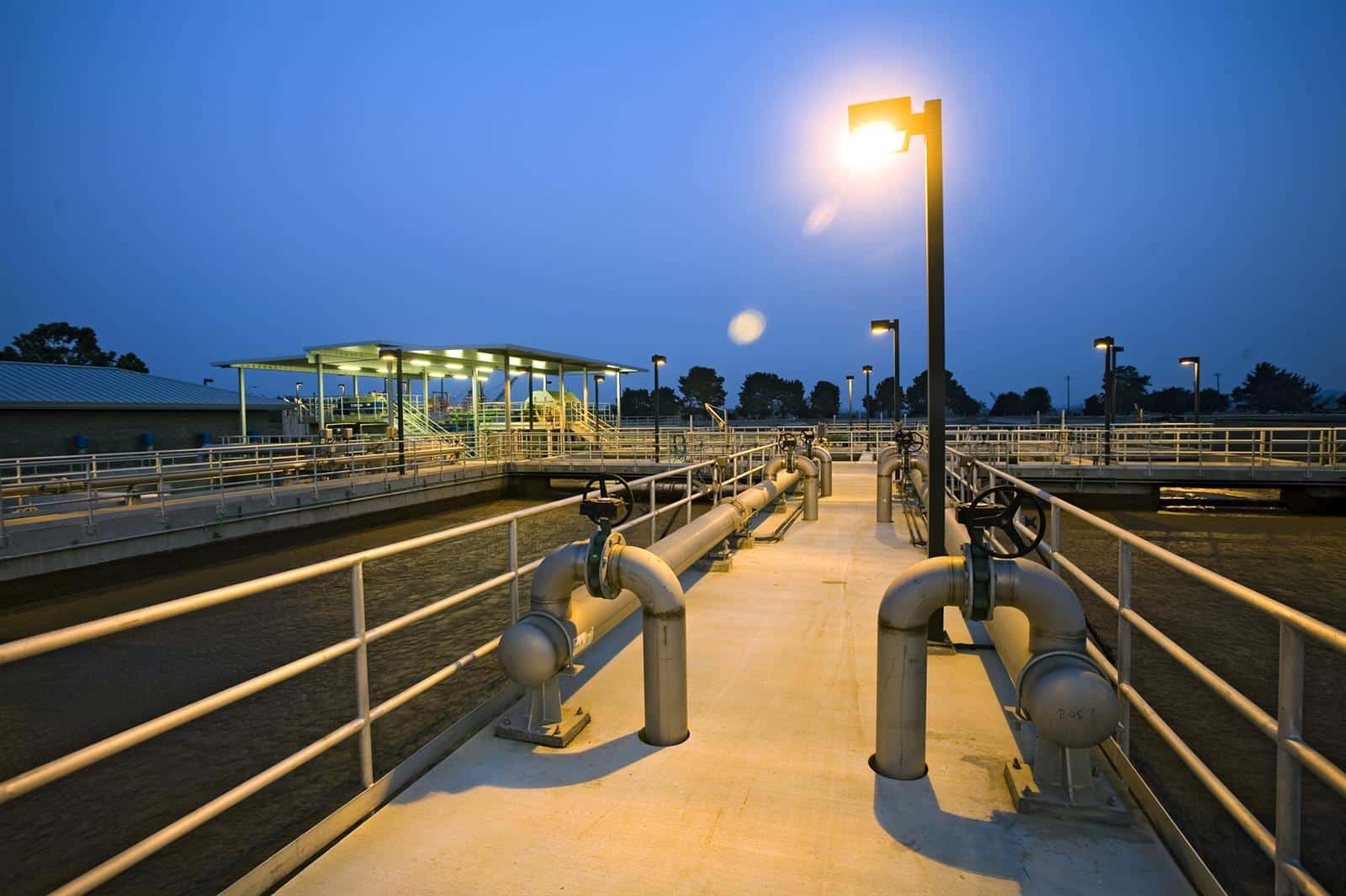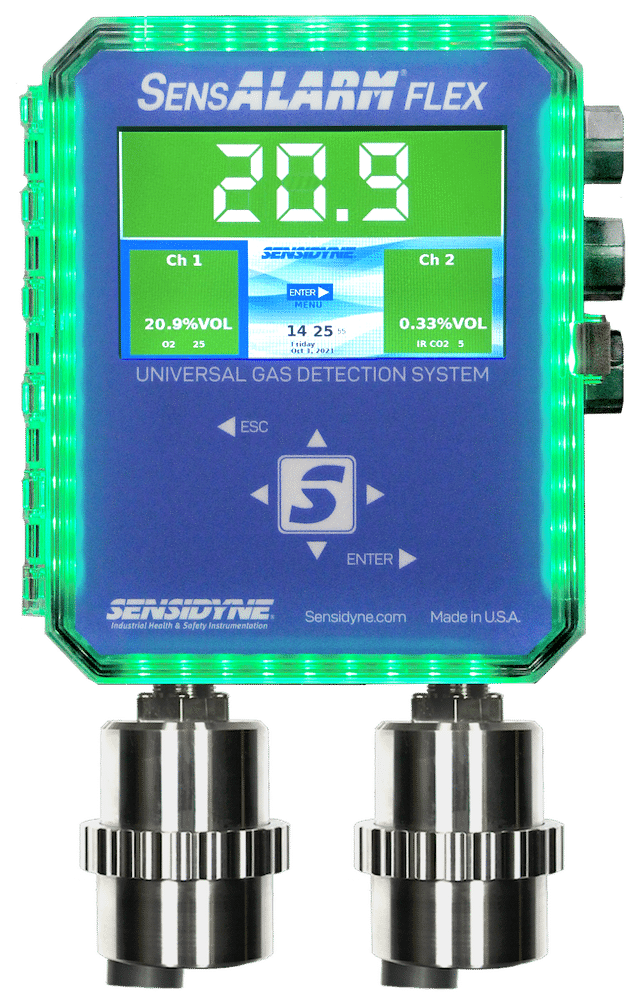Wet Well Gas Detection Overview
Wet Wells by definition are a portion of the water and waste water pumping station that receives and temporarily stores wastewater for the purpose of pumping, and may also incorporate screening. These areas are directly exposed to the sewer atmosphere and its hazards of combustible and toxic gases plus the potential for asphyxiation. A dry well, sealed off from the wet well, is often used to place electrical and mechanical equipment associated with the pumping, control, ventilation and safety measures.
Hazards – Methane, Carbon Dioxide and Hydrogen Sulfide are released by decomposing sewage in sanitary systems. Storm or industrial sewers may contain petroleum vapors or industrial solvents from accidental releases or leaking processes and tanks.
Regulations: NFPA 820 and OSHA Confined Space Regulations are the authority. They mandate combustible gas detection (Methane and floating flammable liquids), Toxic gas (Hydrogen Sulfide) and Oxygen deficiency monitoring.
Footnotes: NFPA 820, 2008 Edition, Standard for Fire Protection in Wastewater Treatment and Collection Facilities; OSHA, 29 CFR 1910.146, Permit Required Confined Spaces (Includes sewer entry)
Wet Well Gas Monitoring Strategies
-
- Sample Draw – In a sample draw system, an aspirator or a pump is used to pull a sample from the wet well to the sensor/transmitter location. Sample systems are inherently maintenance intensive on a moisture saturated wet well atmospheres as condensation is the norm. In-line particulate filtering is also desirable, which adds to the upkeep. Sampling systems require a flow switch alarm to signal when the system becomes clogged. Caution, The fire and electrical codes prohibit sampling from one hazardous area classification to another, since the sample tubing provides a flame path. Placing flame arrestors in the sample path to overcome this, further complicates the maintenance issues. All the sample draw equipment must have third party listing per NFPA 820. The sample draw option is attractive but potential users should carefully evaluate the ownership cost of maintenance.
Footnotes: NFPA 1, The Uniform Fire Code; IFC 2009, The International Fire Code, NFPA 70, The National Electrical Code, Section 500
- Remote Sensor with Remote Gassing – Mounting gas sensors remote from the transmitters is the preferred method employed for lighter than air gases or locations with difficult access. In a Class I, Division 1 hazardous (classified) area, rigid conduit is required, unless the sensor head is listed intrinsically safe. Users sometimes mount the transmitters in the wet well or in the drywell, as access and convenience permit. Users perform all maintenance functions from the transmitter location.
Footnote: NFPA 820 requires listed gas sensor system and components (third party approved, CSA, FM, UL, etc.).
- Sample Draw – In a sample draw system, an aspirator or a pump is used to pull a sample from the wet well to the sensor/transmitter location. Sample systems are inherently maintenance intensive on a moisture saturated wet well atmospheres as condensation is the norm. In-line particulate filtering is also desirable, which adds to the upkeep. Sampling systems require a flow switch alarm to signal when the system becomes clogged. Caution, The fire and electrical codes prohibit sampling from one hazardous area classification to another, since the sample tubing provides a flame path. Placing flame arrestors in the sample path to overcome this, further complicates the maintenance issues. All the sample draw equipment must have third party listing per NFPA 820. The sample draw option is attractive but potential users should carefully evaluate the ownership cost of maintenance.
Annunciation – Audible and visual Annunciation is required within the monitored space, at its entrance and the associated drywell. In addition, supervisory alarm notification is mandatory, that is, notification to an area manned 24/7/365 with the capability of responding to an alarm should someone be in distress.
Carefully designed and installed wet well monitoring systems are in code compliance and will protect equipment and personnel for many years. Factory trained technicians should start-up the gas detection system and train the owner’s personnel to perform the quarterly maintenance of functional checks and sensor calibrations.







